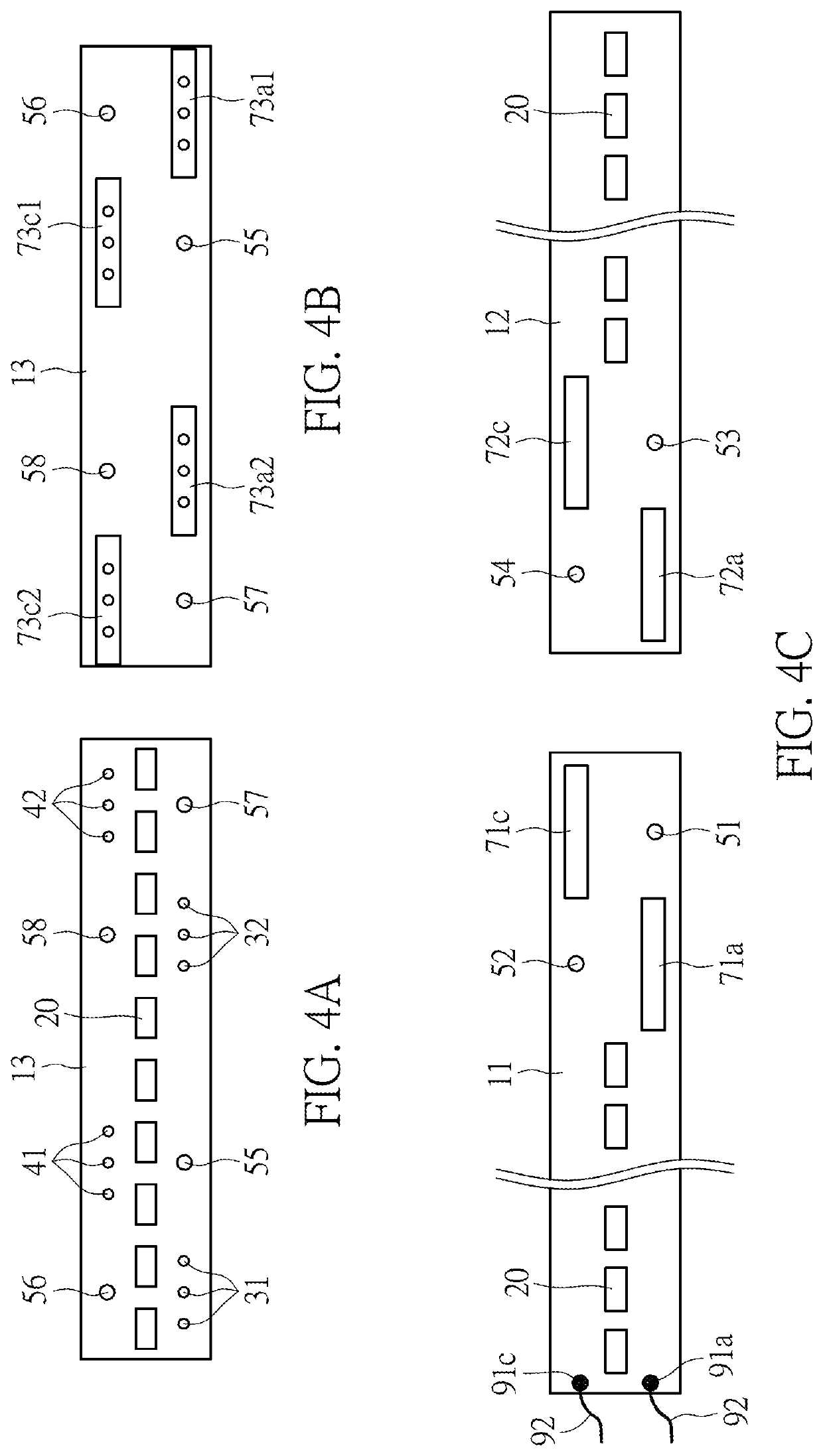Uniformly emitting linear LED light source assembly and method
a technology of led light source and assembly, which is applied in the direction of lighting and heating apparatus, semiconductor/solid-state device details, lighting support devices, etc., can solve the problems of limited luminous efficiency and service life, oleds cannot be applied to red tail lamps and yellow turn signals of automobiles, and cannot be applied, etc., to achieve uniform illumination characteristics, high bonding strength at the joint, and the effect of lengthening the led light strip
- Summary
- Abstract
- Description
- Claims
- Application Information
AI Technical Summary
Benefits of technology
Problems solved by technology
Method used
Image
Examples
first embodiment
[0070]Specifically, the third positive polarity via holes 31 and the third negative polarity via holes 41 in FIG. 6A are distributed at the same side of the row of the LEDs 20, for example, below the row, as shown in FIG. 6A. Likewise, the fourth positive polarity via holes 32 and the fourth negative polarity via holes 42 are also distributed below the row of the LEDs 20. FIG. 6B shows a back surface that is presented after the connecting board 13 in FIG. 6A is turned over from left to right. Bonding zones and positioning holes marked from FIG. 6A to FIG. 6E are identical with those in the
fourth embodiment
[0071]FIG. 7A to FIG. 7E are schematic diagrams of different statuses in the present invention, where FIG. 7B shows a back surface of the connecting board 13 that is presented after the connecting board 13 in FIG. 7A is turned over from left to right; FIG. 7C shows implementation statuses of front surfaces of the first light strip 11 and the second light strip 12; FIG. 7D is a schematic diagram of an implementation status after assembly of the first light strip 11, the second light strip 12, and the connecting board 13; and FIG. 7E is a schematic side view after assembly.
[0072]In the fourth embodiment shown in FIG. 7A to FIG. 7E, a difference between this embodiment and the first embodiment is as follows: An extended bonding sector 60 is extended from a side of the connecting board 13, and is used to provide bonding zones for positive or negative power input circuits or circuit signals, so as to connect multiple corresponding LED power lines or control lines on the LED light strips....
PUM
| Property | Measurement | Unit |
|---|---|---|
| size | aaaaa | aaaaa |
| thickness | aaaaa | aaaaa |
| height | aaaaa | aaaaa |
Abstract
Description
Claims
Application Information
 Login to View More
Login to View More - R&D
- Intellectual Property
- Life Sciences
- Materials
- Tech Scout
- Unparalleled Data Quality
- Higher Quality Content
- 60% Fewer Hallucinations
Browse by: Latest US Patents, China's latest patents, Technical Efficacy Thesaurus, Application Domain, Technology Topic, Popular Technical Reports.
© 2025 PatSnap. All rights reserved.Legal|Privacy policy|Modern Slavery Act Transparency Statement|Sitemap|About US| Contact US: help@patsnap.com



